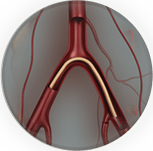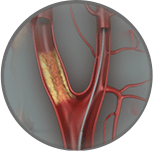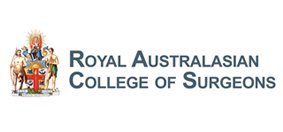Aortic Aneurysm
Aortic aneurysm is a condition characterized by an abnormal ballooning or bulging of a section of the aorta due to weakness in the wall of the blood vessel. The aorta is the main blood vessel that carries oxygenated blood from the heart to the different parts of the body. An aneurysm can develop anywhere along the course of the aorta;
- Aneurysms that occur in the section of the aorta that passes through the abdomen are called abdominal aneurysms.
- Aneurysms that occur in the part of the aorta that passes through the chest are called thoracic aortic aneurysms.
Most patients with aortic aneurysm do not have any symptoms. Usually, when the aneurysm enlarges it may cause chest or back pain, palpitations, fatigue, dizziness or shortness of breath.
Surgical aneurysm repair is usually recommended if conservative measures fail to relieve the symptoms of aortic aneurysm or there is a risk of rupture due to the large size of the aneurysm.
During aortic aneurysm surgery, the aneurysm is exposed through dissection of the chest. A heart-lung machine is connected to the patient’s body to maintain blood circulation during the surgery. At the same time clamps are placed on the aorta, above and below the aneurysm, and the damaged portion of the aorta is removed and is replaced with a synthetic tube or graft. Permanent wire sutures are used to join the breast bone or the sternum, which was dissected to approach the aorta. The skin and muscle is closed with dissolving sutures.
Stent graft procedure may be used to repair an aortic aneurysm in patients at high risk from surgery. During the procedure, a stent graft is placed inside the diseased portion of the aorta to help protect the aneurysm from rupturing.
After the surgical repair of the aneurysm patients are advised certain lifestyle changes such as abstinence from smoking, avoid heavy lifting, and blood pressure control to improve their condition.








